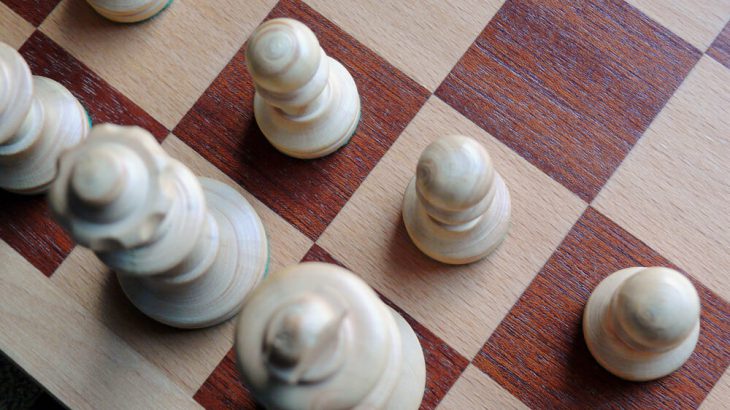
Battle of Economic Ideas – Part II
This is the second post in our blog series on the Battle of Economic Ideas. You can read the first post here
The underlying theme in the previous post was the emergence of a rational and modern society during the Age of Enlightenment (1650s-1780s). Thinkers like Rene Descartes and John Locke questioned feudal doctrines of the past, paving the way for the rise of scientific thinking and political freedom. The subsequent era of the Classical Liberals (1750s to 1880s) witnessed the birth of modern economics through the works of Adam Smith. Smith’s ‘invisible hand’ hypothesis provided the justification for non-interference by the government in the workings of the market. This ‘free-market’, ‘laissez faire’[1] approach to economics coupled with political self-determination and the emphasis on ‘individual’ over ‘society’ was the hallmark of the Classical Liberal era.
Continuing from where we left, this post provides an overview on the subsequent era of the Marxian-Keynesian backlash against Classical Liberal ideas.
The Marxian-Keynesian Backlash (1850s to 1970s)
Not everybody was pleased with the Industrial Revolution. While the Classical Liberals saw in the Industrial Revolution the salvation for the masses through increase in per capita income, others viewed it as the enrichment of few at the cost of the poor. Others still viewed the Revolution as the degradation of society at the altar of material wealth. Critics drew attention to the following aspects of the Revolution– poor working conditions, child labour, rising inequality, environmental degradation and rise of materialism.
The Sadler Report[2] for instance, written in 1832 by Michael Sadler, a member of UK Parliament, highlighted the poor and exploitative conditions of child labour in English factories and sought to limit the hours of work for children. Historian Royston Pike commented that the Report is, “a mass of evidence, constituting a most formidable indictment of factory conditions …It is impossible not to be staggered by the revelations of human misery and degradation – impossible not to be moved by the dreadful stories of children and young persons (and adults, too, for that matter) who were bullied and cursed and tormented, pushed around and knocked about by those placed in authority over them.”[3] The report drew public outrage and was a damning indictment on England’s factory system.
Another manifestation of a backlash against the Classical Liberal ideas was the rise of Romanticism (1800s-1850s), a movement which railed against the ‘evils’ of the factory system. This movement emphasized on the emotional over the rational, beauty over utility and subjectivity over specificity. Romanticism pitched itself squarely against the ‘materialistic’ ethos of the Industrial Revolution. Thinkers associated with this movement, which included artists, musicians and several literati, sought to highlight that society should strive for lofty ideals than mere accumulation of material wealth.
Even though Romanticism was on the rise, it took the revolutionary ideas of the “German scholar par excellence, slow, meticulous, and painstakingly, even morbidly, perfectionist”[4] Karl Marx to provide “the gravest, most penetrating examination the capitalist system has ever undergone.”[5] To fully comprehend Marx’s view of capitalism, we need to take a small detour to outline the conception of history embedded within the Marxian analysis. The Communist Manifesto, an 1848 political pamphlet by Marx and his life-long friend, collaborator and the co-founder of Marxism, Friedrich Engels, starts with the lines, “The history of all hitherto existing society is the history of class struggles…. The modern bourgeois society that has sprouted from the ruins of feudal society has not done away with class antagonisms. It has but established new classes, new conditions of oppression, new forms of struggle in place of the old ones.”[6] Thus, Marx and Engels viewed history as a process of constant class antagonism with the oppressors and the suppressed changing depending on the epoch. Emanating from this conception of history is the Marxian view that while the capitalistic society has progressed from a feudal society, it still retains class antagonism- only the oppressors have changed. During the feudal ages it was the aristocratic class who were the oppressors, while in a capitalistic society the bourgeois (owners of the means of productions) are the new oppressors and the proletariat (working class) the suppressed.
But what is the genesis of this class antagonism? In the Marxian view, class antagonism is a function of the super-structure adopted by society for production and its distribution. In the words of Engels, “…production, and with production the exchange of its products, is the basis of every social order; that in every society that has appeared in history the distribution of the products, and with it the division of society into classes or estates, is determined by what is produced and how it is produced, and how the product is exchanged. According to this conception, the ultimate causes of all social changes and political revolutions are to be sought, not in the minds of men, in their increasing insight into eternal trust and justice, but in changes in the mode of production and exchange; they are to be sought not in the philosophy but in the economics of every epoch concerned.”[7](emphasis mine).
Thus, in the Marxist view, class antagonism in a capitalistic society cannot be ameliorated because such antagonism is embedded within the capitalistic system of production and distribution. Only if this system of production and distribution is changed (which is to say capitalism is discarded) can there be hope of establishing a classless society- the communist society.
It should be noted that Marx was not against capitalism. He viewed the emergence of capitalist mode of production as a necessary stepping stone to socialism and then to communism. Also, a fully developed capitalist structure was required to expand production for the implementation of the Marxist credo of “each according to his ability to each according to his need”[8]. Under the Marxian analysis, the ascendancy of capitalistic forces during the Industrial Revolution would bring class struggles to its forefront and stoke a revolution for the overthrowing of the private ownership of means of production. Socialism would be the result of such a revolution where the ownership of the means of production would be assumed by the State. However, this too would not eliminate class struggle as there would be a new class of owners, and in a subsequent revolution, the concept of ‘ownership’ itself would be eliminated with the onset of a true classless communist society.
The contribution of Marx and Engels in changing the dominant discourse in the fields of politics, sociology and economics cannot be undermined. Marx’s theories inspired leaders like Lenin, who organized the Bolshevik revolution in Russia that led to the formation of the Soviet Union. Though there were differences in the ideas of Marx and Lenin, Lenin’s successor, Joseph Stalin, coined the term “Marxism-Leninism” and officially adopted it as the State ideology of the Soviet Union.
Marx’s ideas led to the complete decimation of the Classical Liberal ideas of laissez faire in countries which embraced communism. He died in 1883 in London. Coincidentally, the same year, not very far from London, an English economist, journalist and financier was born, who would play an equally staggering role in re-defining economics away from its Classical Liberal roots. This gentleman was John Maynard Keynes.
Before we proceed, it is important to clarify that though the theories of Marx and Keynes departed from the Classical Liberal approach, the similarity ends there. Keynes was hardly a socialist or communist. In 1931, he said, “How can I accept the [Communist] doctrine, which sets up as its bible, above and beyond criticism, an obsolete textbook which I know not only to be scientifically erroneous but without interest or application to the modern world?”[9]
Keynes central idea was that markets are not self-correcting[10] and he saw a large role for the government in stabilizing market forces. He was thus an ‘activist’ economist- his ‘activist’ streak most visible when he wrote, “Economists set themselves too easy, too useless a task, if in tempestuous seasons they can only tell us, that when the storm is long past, the ocean is flat again.”[11] He discredited the Classical Liberal ‘balanced budget hypothesis’, as per which a government should refrain from borrowing. On the contrary, Keynes’ theories advocated that government should regulate economic activity by running budget deficits in times of depression and budget surplus at times of heightened economic activity, thereby regulating aggregate demand and freeing the economy from the vicissitudes of business cycles.
Economics does not exist in a vacuum. If it did, then economic ideas will be exactly that, only ideas. The field of politics provides the outlet for economic ideas through the promulgation of State policies, and in the case of Keynes, his ideas were most visible in the policies adopted by Franklin D. Roosevelt, the 32nd President of the United States from 1933 to his death in 1945. Roosevelt assumed Presidency when the United States was in the midst of the Great Depression of the 1930s which also happened to be the decade in which Keynes published his magnum opus The General Theory of Employment, Interest and Money. His analysis that, “an economy in depression could stay there. There was nothing inherent in the economic mechanism to pull it out. One could have ‘equilibrium’ with unemployment, even massive unemployment”[12] strongly resonated with the depression in the developed world. In line with the Keynesian prescription, Roosevelt’s New Deal[13] substantially increased the role of the government in the economy through social security laws combined with aggressive fiscal policy. Roosevelt also sought to dispel the misgivings regarding government intervention. In a 1938 speech, he said, “Let us never forget that government is ourselves and not an alien power over us. The ultimate rulers of our democracy are not a President and senators and congressmen and government officials, but the voters of this country.”[14]
The Keynesian world had departed substantially from the Classical Liberal world of absolute free markets. Though Keynes diluted the Classical Liberal credo of zero government intervention, he was not against capitalism. In fact, Keynes actually saved capitalism from the growing influence of socialism. Keynes’ version of restricted capitalism provided a political-economic system that borrowed from socialism’s top-down economic planning, while retaining the basic fabric of unbridled capitalism. He salvaged capitalism by offering the world Capitalism Version 2, exactly at a time when there was a fear that capitalism as a political-economic system would be crushed under the growing influence of fascism and socialism as manifested in the rise of authoritarian leaders like Hitler in Germany, Benito Mussolini in Italy and Stalin in the Soviet Union.
Keynes was undoubtedly the most influential economist of the twentieth century. His influence was so wide reaching that in 1971, Richard Nixon, the 37th President of the United States, said “I am now a Keynesian in economics”. Ironically, as subsequent events would prove, the 1970s happened to be the decade during which Keynesian economics started to splutter. Just when it seemed Classical Liberalism has been crushed under the weight of Keynesian ideas, like a phoenix, it rose, albeit in a different avatar, to once again fight for primacy in the battle of economic ideas.
To be continued in the third and penultimate part of this blog series.
—
Credit: The young boy depicted in the graphic illustration utilises work of Canadian street artist iHeart’s “Nobody likes me” and Banksy’s “Angel Boy”.
[1] Laissez-faire (French) is an economic system in which transactions between private parties are free from government interference such as regulations, privileges, tariffs, and subsidies. The phrase laissez-faire is part of a larger French piece and literally translates “let (it/them) do,” but in this context usually means “let it be,” or “let it go.” http://en.wikipedia.org/wiki/Laissez-faire
[2] Report of the Select Committee on Factory Children’s Labour (Parliamentary Papers 1831-32, volume XV
[3] Royston Pike, E (1966). Human Documents of the Industrial Revolution in Britain. London: George Allen & Unwin
[4] Heilbroner, Robert L., 1999, The Worldly Philosophers, Simon & Schuster, p140
[5] Heilbroner, Robert L., 1999, The Worldly Philosophers, Simon & Schuster, p168
[6] Communist Manifesto, Chapter 1: Bourgeois and Proletarians
[7] Engels, Friedrich, 1878, Anti-Duhring, p. 294
[8] Marx, Karl, 1875, Critique of the Gotha Program, Part I
[9] Heilbroner, Robert L., 1999, The Worldly Philosophers, Simon & Schuster, p279
[10] Keynes had once remarked that “The market can stay irrational longer than you can stay solvent.” http://blogs.wsj.com/marketbeat/2011/02/11/keynes-he-didnt-say-half-of-what-he-said-or-did-he/
[11] Keynes, John Maynard, 1923, A Tract on Monetary Reform, Chapter 3
[12] Keynes, John Maynard, 1936, The General Theory of Employment, Interest and Money
[13] The New Deal refers to several policy initiatives by the Roosevelt administration in the United States between 1933 and 1938.
[14] Roosevelt, Franklin D., 1938, Address at Marietta, Ohia. July 8, 1938



